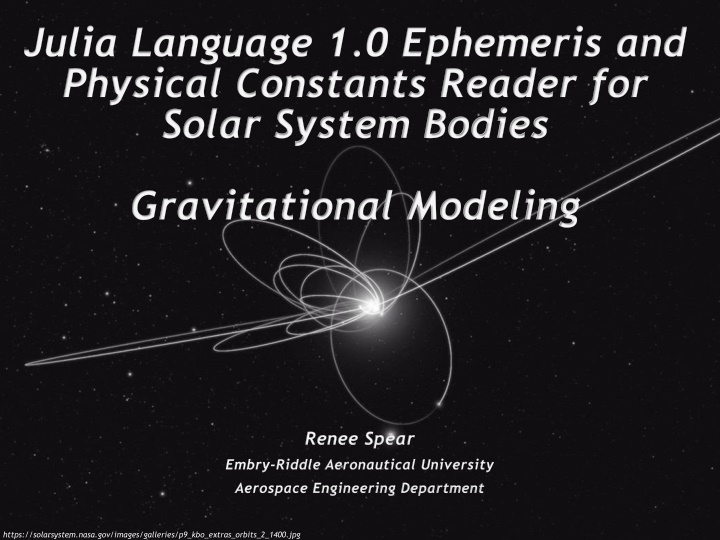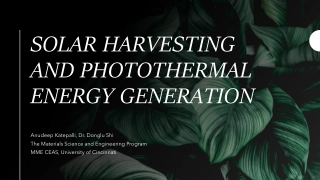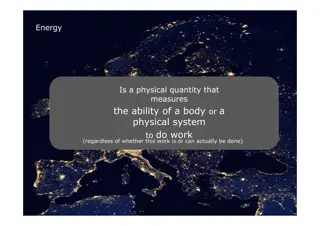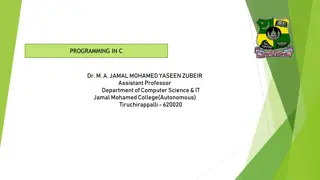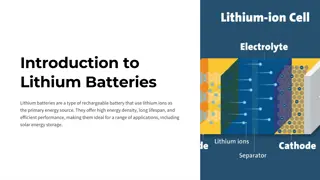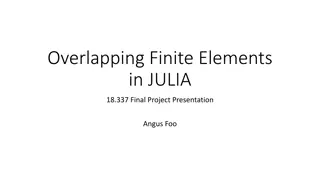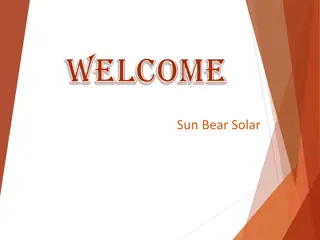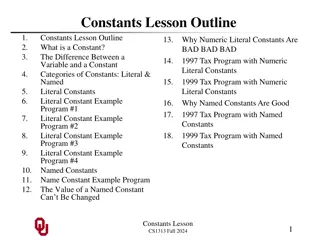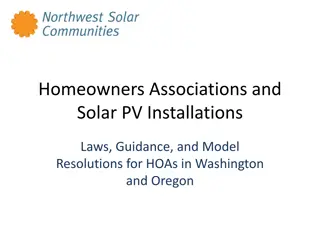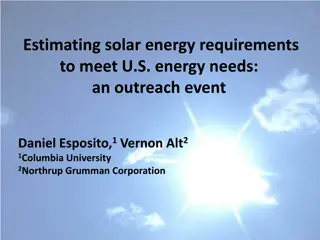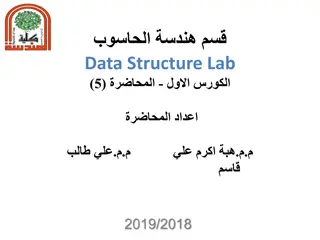Julia Language 1.0 Ephemeris and Physical Constants Reader for Solar System Bodies
The cutting-edge Julia Language 1.0 tool designed for gravitational modeling of solar system bodies. Enhance space missions, optimize trajectories, and improve spacecraft telemetry with this innovative technology from Renee Spear at Embry-Riddle Aeronautical University's Aerospace Engineering Department."
Download Presentation

Please find below an Image/Link to download the presentation.
The content on the website is provided AS IS for your information and personal use only. It may not be sold, licensed, or shared on other websites without obtaining consent from the author.If you encounter any issues during the download, it is possible that the publisher has removed the file from their server.
You are allowed to download the files provided on this website for personal or commercial use, subject to the condition that they are used lawfully. All files are the property of their respective owners.
The content on the website is provided AS IS for your information and personal use only. It may not be sold, licensed, or shared on other websites without obtaining consent from the author.
E N D
Presentation Transcript
Julia Language 1.0 Ephemeris and Physical Constants Reader for Solar System Bodies Gravitational Modeling Renee Spear Embry-Riddle Aeronautical University Aerospace Engineering Department https://solarsystem.nasa.gov/images/galleries/p9_kbo_extras_orbits_2_1400.jpg
Acknowledgements Dr. Damon Landau Dr. Kaela Martin Julia Mihaylov Courtesy of NASA. Courtesy of NASA. 2
Why Use Boddat? Retrieve updated ephemeris information Courtesy of NASA. Simplify and aid future space missions Improve available Julia Language library within NASA Trajectory optimization Satellite navigation Spacecraft telemetry 4
Why Use Boddat? Position of Earth and Mars at both launch and arrival of each rover. Image Credit: NASA 5
gravmod Gravitational potential of a body on a spacecraft 65 bodies available for modeling Utilizes exterior gravitational field modeled using a Brillouin sphere Courtesy of Springer Science. 5 sub-functions 6
Exterior Gravity Field ? ??? ??? ?+1 ???(sin?)cos(??) ?? ?? ?? ? ? ??= ?=0 ?=0 sin(??) ? Symbol Ue Meaning Potential G M* R*e r Pnq Cenq, Senq , Gravitational constant Reference mass of the body Reference radius of the body Spacecraft position Associated Legendre function Spherical harmonic coefficients Longitude, latitude of spacecraft in body-fixed frame 7
Applied Mathematics sphereMassMod function ellMassMod function haversine function Prime meridian direction cosine matrix (pmdcm) Courtesy of NASA. Courtesy of NASA. 8
How to Use gravmod potentialB = gravmod([ body ], [scPos], [t]) Parameter body Meaning Desired body for gravitational potential Spacecraft position wrt Sun [km] Days past noon in Barycentric Dynamical Time (TDB) on January 1, 2000 (J2000) for orientation scPos t 9
gravmod Spheroid Model Example potentialB = gravmod([ Earth ], [-1.5*10^7, 1.5*10^8, -7.0*10^3]) Input Earth Meaning Desired body for gravitational potential Spacecraft position wrt Sun [km] [-1.5*10^7, 1.5*10^8, - 7.0*10^3] 10
gravmod Spheroid Model Example Input: potentialB = gravmod([ Earth ], [-1.5*10^7, 1.5*10^8, -7.0*10^3]) Output: 6.91*10^8 Output 6.91*10^8 Meaning Potential of the body on the spacecraft at that location [kJ/kg] 11
gravmod Ellipsoid Model Example potentialB = gravmod([ Ceres ], [-2.96*10^8, -2.12*10^8, 0.74*10^8]) Input [ Ceres ] Meaning Desired body for gravitational potential Spacecraft position wrt Sun [km] [-2.96*10^8, -2.12*10^8, 0.74*10^8] 12
gravmod Ellipsoid Model Example Input: potentialB = gravmod([ Ceres ], [-2.96*10^8, 2.12*10^8, 0.74*10^8]) Output: 1.93*10^-12 Output 1.93*10^-12 Meaning Gravitational potential of the body on the spacecraft at that location [kJ/kg] 13
gravmod Time Example potentialB = gravmod([ Mars ], [2.12*10^8, 1.96*10^8, -3.63*10^5], [2260.]) Input [ Mars ] Meaning Desired body for gravitational potential Spacecraft position wrt Sun [km] [2.12*10^8, 1.96*10^8, -3.63*10^5] [2260.] Noon TDB March 10, 2006 (with respect to J2000) 14
gravmod Time Example Input: potentialB = gravmod([ Mars ], [2.12*10^8, 1.96*10^8, -3.63*10^5], [2260.]) Output: 1.12*10^-8 Output 1.12*10^-8 Meaning Potential of the body on the spacecraft at that location [kJ/kg] 15
Future Implementations Function for albedo Increase optimization Exterior gravity field design Interior gravity field design Courtesy of NASA. 16
Questions? Renee Spear spearr@my.erau.edu Courtesy of NASA. 17
References Bezanson, J., Edelman, A., Karpinski, S., and Shah, V. B., "Julia: A Fresh Approach to Numerical Computing," Soceity for Industrial and Applied Mathematics Review, Vol. 59, No. 1, 2015, pp. 65-98. Englander, J. A. and Conway, B. A., "Automated Solution of Low-Thrust Interplanetary Trajectory Problem," Journal of Guidance, Control, and Dynamics, Vol. 40, No. 1, 2017, pp. 15-27. Jiang, Y. Equilibrium Points and Orbits around Asteroid with the Full Gravitational Potential Caused by the 3D Irregular, Cornell University Library, 2018. Reimond, S. and Baur, O., "Spheroidal and ellipsoidal harmonic expansions of the gravitational potential of Small Solar System Bodies. Case study: 67P/Churyumov-Gerasimenko," Journal of Geophysical Research, Vol. 121, No. 3, 2016. Marson, R., Lagrasta, S., and Malvolti, F. "Computation of Precision Ephemeris coefficients in the GNSS message: Practical results from a proficient algorithm," IEEE AESS European Conference on Satellite Telecommunications, Rome, Italy, 2012. Martin, K., Mihaylov, J., Spear, R., and Landau, D. "Julia Language Ephemeris and Physical Constants Reader for Solar System Bodies," AIAA Space Flight Mechanics Meeting, Kissimmee, FL, 2018. Werner, R. and Scheeres, D., "Exterior gravitation of a polyhedron derived and compared with harmonic and mascon gravitation representations of asteroid 4769 Castalia," Celestial Mechanics and Dynamical Astronomy, Vol. 65, No. 3, pp. 313-344. Takahashi, Y. and Scheeres, D., "Small body surface gravity fields via spherical harmonic expansions," Celestial Mechanics and Dynamical Astronomy, Vol. 119, No. 2, 2014. 18
References (cont.) Aoki, S., Kinoshita, H., Guinot, B., Kaplan, G. H., and McCarthy, D. D. . S. P. K., "The New Definition of Universal Time," Astronomy and Astrophysics, 1982, pp. 359-361. Chobotov, V. A. Orbital Mechanics, American Institute of Aeronautics and Astronautics, Reston, 2002. Holdaway, R. "Satellite ephemeris prediction and orbit maneuverability by low thrust," 11th Electric Propulsion Conference, 1975. Stoneking, E. T., Neerav, S., and Dean, C. J. "Real-Time Visualization of Spacecraft Telemetry for the GLAST and LRO Missions," SpaceOps Conference, Huntsville, AL, 2010. Vasile, M., Ceriotti, M., Becerra, V. M., and Nasuto, S. J., "An Incremental Algorithm for the Optimization of Multiple Gravity Assist Trajectories," Computational Intelligence in Aerospace Sciences, 2014, pp. 745-779. 19
